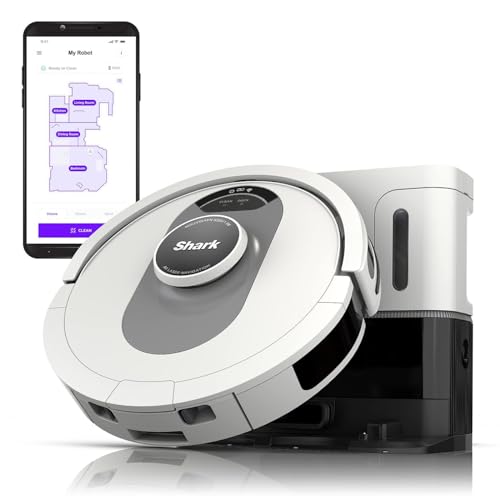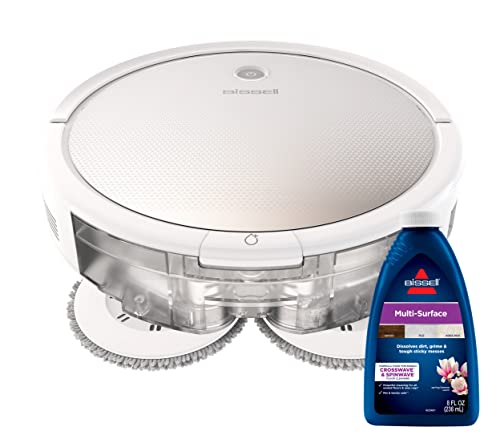Don't Buy Into These "Trends" Concerning Robot Vacuum And Mo…
페이지 정보

작성자 Gwendolyn
조회 3회 작성일 24-09-02 00:56
조회 3회 작성일 24-09-02 00:56
본문
 Robot Vacuum and Mop - Hands-Free Cleaning Made Easy
Robot Vacuum and Mop - Hands-Free Cleaning Made EasyIf you're interested in an automated cleaner that is hands-free and can do it all, consider this robot that is two-in-one. It can mop hard floors and vacuums low- and medium-pile carpet. its app lets you design no-mop zones as well as adjust cleaning schedules and modes.
Look for models that can detect the type of flooring they're using, empty their own water and dirt tanks and avoid obstacles like phone chargers, socks and pet hair. Find out how easy it can be installed.
Self-Emptying
People are always looking for ways to lessening their workloads as the world gets more chaotic and chaotic. Robot vacuums and mop are among the most effective tools that are available to assist you. These machines can vacuum pet hair, dirt and crumbs, while simultaneously scrubbing the floors clean. You can also make use of a smartphone or voice assistant to control them via pre-programmed schedules and specific room designations.
One of the best time-savers for both the users and machines is self-emptying models that don't need you to empty the bin after each cleaning session. This will save you time and let your robot clean the entire house more often.
If you're thinking about self-emptying be sure that the dust bin is large enough to fit your home's size and cleaning frequency, because it will fill up quickly if you choose to run it on a regular basis. Additionally, you'll need to ensure that the system does not overfill, causing obstructions that prevent the robot from emptying it completely.
The self-emptying feature works by removing the dust bin inside the machine and putting it in larger storage containers -Think of it as the bag that comes with a traditional vacuum cleaner -which can be empty every two or three cycles. These robots are well worth the extra cost since they feature this top feature.
Some models wash and dry dirty pads automatically after each use. Others have docks that does the job for you and you just need empty it once or twice per year.
For a single-function robot that does both, check out the top-rated Roborock model. The RockDock-S7 MaxV Ultra can vacuum and mop, with a special dock that does all the maintenance for you. It is possible to schedule the unit to start using voice assistants such as Alexa or Google Assistant. It does not need to empty the tanks by hand. It comes with boundary strips that stop it from wandering into other areas of your house even if you don't want it to.
Object Avoidance
The most effective robot vacuums come with objects avoidance, which can help the machine navigate through furniture legs and toys for children. This feature is essential for families with pets and children, since the robot can be damaged or jammed when it comes into contact with them.
The technology is typically based around a single sensor, or two sensors located near the vacuum cleaner's shock-absorbing bumpers. If the sensors detect a blockage the robot will then reorient and turn until it finds an open path. Certain models employ lidar technology, which makes use of lasers to measure the distance between the robot and the surrounding objects. This enables it to create an image of its surroundings in real-time and move more efficiently through your home.
Other robovacs, that do not utilize lidar technology, are designed to recognize obstacles with cameras that use a monocular or binocular sight. These systems are effective in the best robot vacuum and mop for vinyl plank floors lighting conditions, but they don't work so well in low-light conditions or with items that are the same color as their surroundings. For instance, a robot with monocular vision may have difficulty recognizing cables or shoes.
Some robot vacuums are more advanced than others and can do much more than avoid obstacles. This is why they are also called smart vacuums. They can create a virtual plan for your home, and you can send them to specific areas or rooms via an app. They'll even remember places they have already cleaned, which can cut down on cleaning time and ensure your home is clean and tidy.
Many of the most sophisticated robotic vacuums and mops can switch between different types of floors. Some will automatically register the type of flooring in a room and adjust their suction and brush features to match. Others can move from carpet to hard floors without losing their suction power.
 All smart vacuums and mops must have some kind of obstacle avoidance, regardless of the type of flooring. These mechanisms ensure that the appliances don't ensnare themselves in a web of wires, which can cause them to lose suction. Some models have a list of items they know about, such as socks, shoes and pet waste. The most effective models can recognize these objects and determine their size and distance and escape them without hitting them.
All smart vacuums and mops must have some kind of obstacle avoidance, regardless of the type of flooring. These mechanisms ensure that the appliances don't ensnare themselves in a web of wires, which can cause them to lose suction. Some models have a list of items they know about, such as socks, shoes and pet waste. The most effective models can recognize these objects and determine their size and distance and escape them without hitting them.Floor Mapping
Most robot vacuums come with sensors that can detect objects. If a piece of furniture like furniture legs or a randomly toy is thrown in the way the sensor will trigger that instructs the vacuum mop cleaner robot to turn away from the obstacle and towards a cleaner area of the floor. These sensors are not foolproof. The Roomba 900 Series, for example, was able to avoid our shoeslaces and headphones however, it did accidentally take into cables. We suggest moving objects out of the robot's path before letting it run through your home.
Many of the vacuum and mopping robots we've tested on The Spruce come with an app that you can use to save maps, create schedules, select cleaning modes and monitor your robot's progress. The best apps are easy to set up and intuitive to use, and some even offer a variety of features that make your robot more efficient.
App integration can also help you keep the track of your robot's water tank and dirty pads. It is recommended to look for models that allow you to examine the level of the water tank, the amount of wetness on the best robot mop pad, and when the pad's cloth should be changed. You can even create a schedule that automatically swaps out the pad when it's wet in order to avoid mildewy smells from getting into the old pad.
The mapping feature is essential for robot vacuums that operate on multiple floors. It lets the robots create an outline of your home that they can use to navigate and clean different areas. Certain robots integrate sensors with artificial intelligence to create maps. For instance, iRobot's vacuuming Mapping feature makes use of multiple sensors to scan a room, including corners and walls to find out how far it can go before hitting obstacles or hitting furniture.
Other robots, like the Ecovacs Deebot X1-OMNI and the Roborock S7 MaxV Ultra, utilize optical sensors to detect where the walls are. They can then follow the edges of furniture or apply a mapping algorithm to design the best route for each room.
Mopping Settings
Robot vacuums are automatic and all you need to do is to push a button within the app or on the remote control to get them to clean a space. You can also make use of voice commands to set schedules which is a useful feature for busy families who want their cheap robot vacuum cleaner to perform its duties at the same time every day.
Many robot mops have microfibre pads which are moistened by water tanks at the base. They are able to be used multiple times before they require to be cleaned or replaced. Find models that adjust the amount of water dispensed to fit different flooring types. You should also think about the size of your tank, its ability to switch between wet mopping and dry mopping, and the amount of time a mop that is robotic hoovers can last on one charge.
The best robot mops are able to efficiently and quickly clean hard floors, and get under tables and around obstacles that you'd have trouble doing manually. Although they're not perfect, they do struggle to climb stairs or maneuvering ledges between rooms. They can also leave streaks on tiles and timber particularly in direct sunlight.
A robot vacuum or mop of good quality should also include a carpet sensor. This is essential if your home has floors of different types and the robot will not be sucked into or run over carpets. It should be able to recognize other objects that might hinder cleaning like cords and tassels. This allows you to create "no-go zones" that prevent the robot accessing these areas.
The majority of robots that we test in our CHOICE lab are equipped with smart app integration. This allows you to save maps of your house, set up cleaning schedules, and choose cleaning modes. You can also create virtual barriers that block your robot out of certain areas and receive (sometimes humorous) warnings about errors if the device has a problem. Some apps are easier to use than others, while others have live webcams to monitor your robot.
- 이전글pornografi indo 24.09.02
- 다음글15 Of The Most Popular Pinterest Boards Of All Time About Mesothelioma Claim 24.09.02

